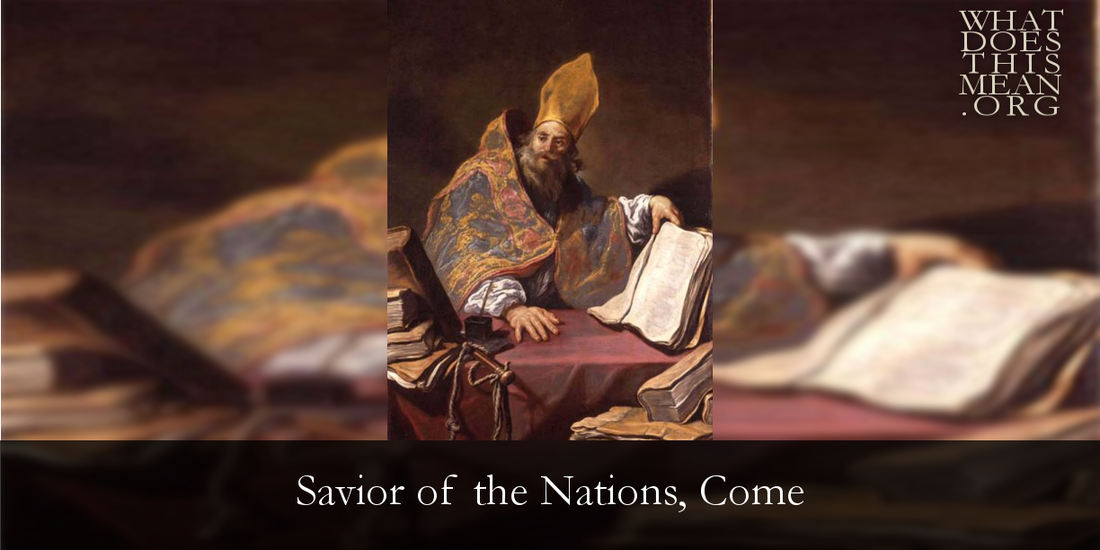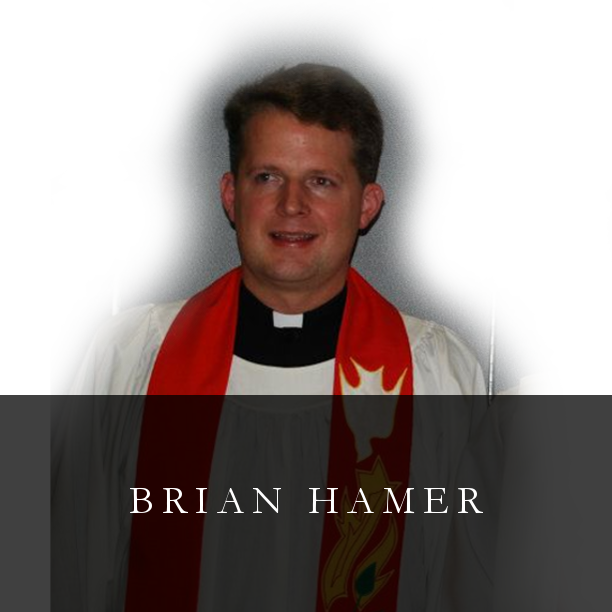1. Savior of the nations, come, Virgin’s Son, make here Your home!
Marvel now, O heav’n and earth, That the Lord chose such a birth.
2. Not by human flesh and blood, By the Spirit of our God,
Was the Word of God made flesh—Woman’s offspring, pure and fresh.
3. Here a maid was found with child, Yet remained a virgin mild.
In her womb this truth was shown: God was there upon His throne.
4. Then stepped forth the Lord of all / From His pure and kingly hall;
God of God, yet fully man, His heroic course began.
5. God the Father was His source, Back to God He ran His course.
Into hell His road went down, Back then to His throne and crown.
6. For You are the Father’s Son / Who in flesh the vict’ry won.
By Your mighty pow’r make whole / All our ills of flesh and soul.
7. From the manger newborn light / Shines in glory through the night.
Darkness there no more resides; In this light faith now abides.
8. Glory to the Father sing, Glory to the Son, our king,
Glory to the Spirit be / Now and through eternity. -- LSB 332
Martin Luther (1483-1546) translated the Ambrosian chant, Veni Redemptor Gentium, into German, altering the original meter from 88 88 to 77 77. His friend and colleague, Johann Walter (1496-1570), edited the 1524 hymnal in which the tune first appeared, probably a collaborative effort between Luther and Walter.
Listen, for instance, to how the original Latin chant transitions seamlessly into the basic chorale, sung here in Latin by men’s voices (LSB st. 1 for unison voices in Latin; stz. 2, 4, 6, and 7 harmonized in German):
One of the best known of Bach’s cantatas, “Savior of the Nations, Come” was composed at the end of 1714 and first performed in the Weimar Court Chapel on Advent I of the same year. The text of the cantata, compiled by Erdmann Neumeister of Hamburg, quotes and paraphrases Luther’s hymn. The opening chorus is an extended setting of LSB 332.1 (see text above throughout this commentary), presented here in conjunction with the autograph score. Listen to how each vocal part – soprano, alto, tenor, and bass – sings the opening statement of the chorale:
The second half of this movement (“Marvel now,” etc.) shifts to a lively, triple meter for the third line of seven syllables: Des sich wundert alle Welt. One can sense both the wonder and the fervent joy in the music as all creation marvels that God has come to earth in Christ. The fourth and final line is a simple statement of the fourth line of st. 1, “That the Lord chose such a birth”.
After a brief recitative that paraphrases and expands on Luther’s hymn (I am calling it “Luther’s” instead of Ambrosian because Neumeister was working with Luther’s German version in 77 77 meter), the tenor sings an aria in 9/8 meter that petitions the real presence of Christ in concrete and profound terms:
Further the glory of Thy name,
Maintain sound doctrine / And bless pulpit and altar!
The petition for Jesus to come to His church is not synergistic, as if the unbeliever is inviting Jesus into his heart in a “come to Jesus prayer” at a local crusade. Rather, building on Revelation 3:20 (quoted in the subsequent recitative), this is the petition of the church for Christ’s ongoing presence in the means of grace. During the “blessed new [church] year”, Christ will be present in and with His church, to maintain sound doctrine, and to bless the pulpit and altar, the respective venues of preaching and the Lord’s Supper, with His presence and His gifts: life, salvation, and resurrection from the dead.
The final chorale of the cantata (movement 6 of 6) is notably brief and delightfully buoyant. Listen to the soprano line and see if you recognize the concluding phrase of a familiar Epiphany hymn:
Come, Lord Jesus! Crown of gladness!
We are yearning
For the day of your returning!
The soaring violins depict the rich theology that lies behind the words of the Communion liturgy, “Lift up your heart / We lift them to the Lord,” as well as the Psalmody of the historic Introit for Advent I: “Unto Thee, O Lord, do I lift up my soul: O my God, I trust in Thee.” Christ descends to us through the Blessed Sacrament. We, in turn, ascend to Him by faith, for our hearts are ever toward the Lord, who alone is our refuge and our strength. To this glorious truth faith can only shout a loud “Amen”!
Do you recognize the hymn tune in the soprano line? It is the final phrase of the Queen of Chorales, “How Lovely Shines the Morning Star” (LSB 395.6, starting with “Amen!”) which will be the subject of next month’s “Lifted Voice” column. The “sneak preview” of an Epiphany text in an Advent cantata stresses the good news that all that Christ has promised is fulfilled even now as He enters our churchly Jerusalem. As the Collect for Advent I puts it: “O Lord … come, that by Thy protection we may be rescued from the threatening perils of our sins and saved by Thy mighty deliverance” (TLH p. 54).



 RSS Feed
RSS Feed
